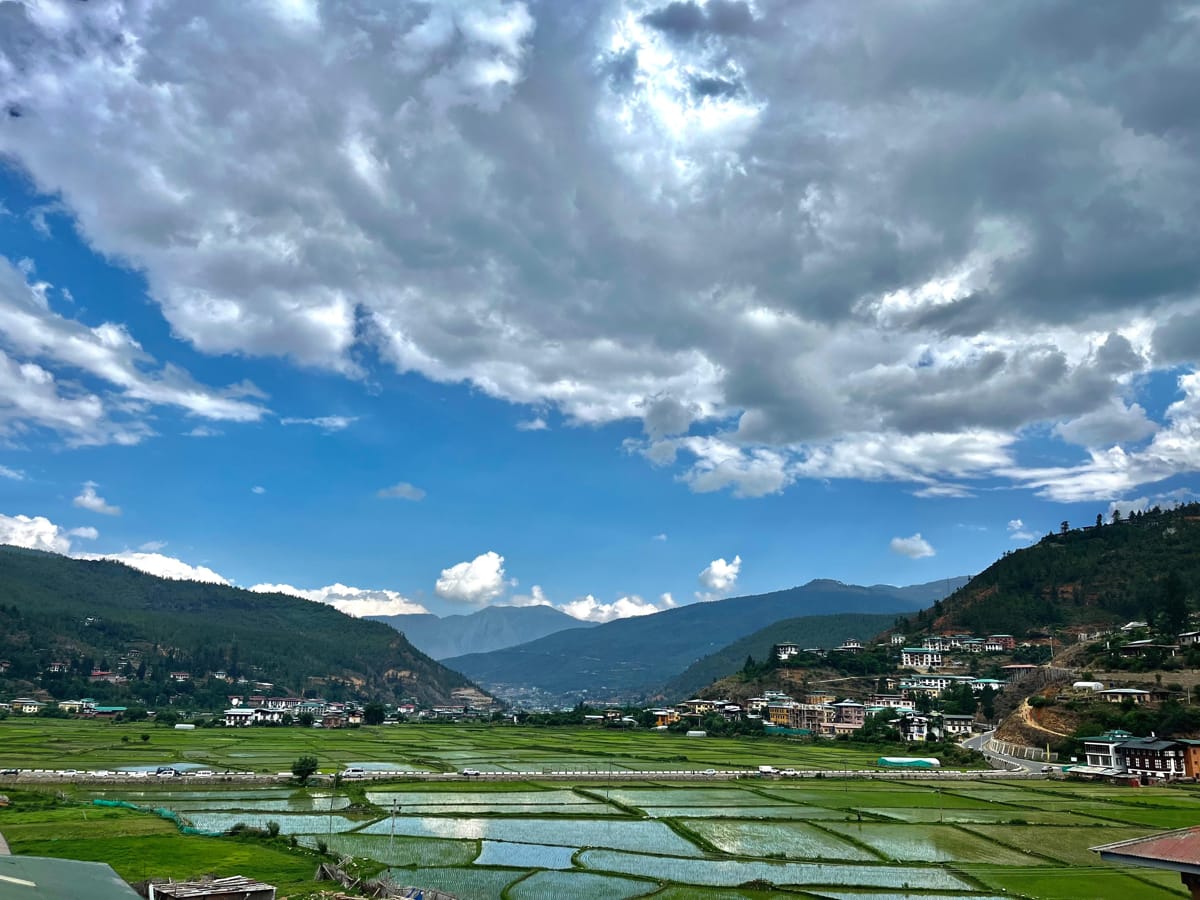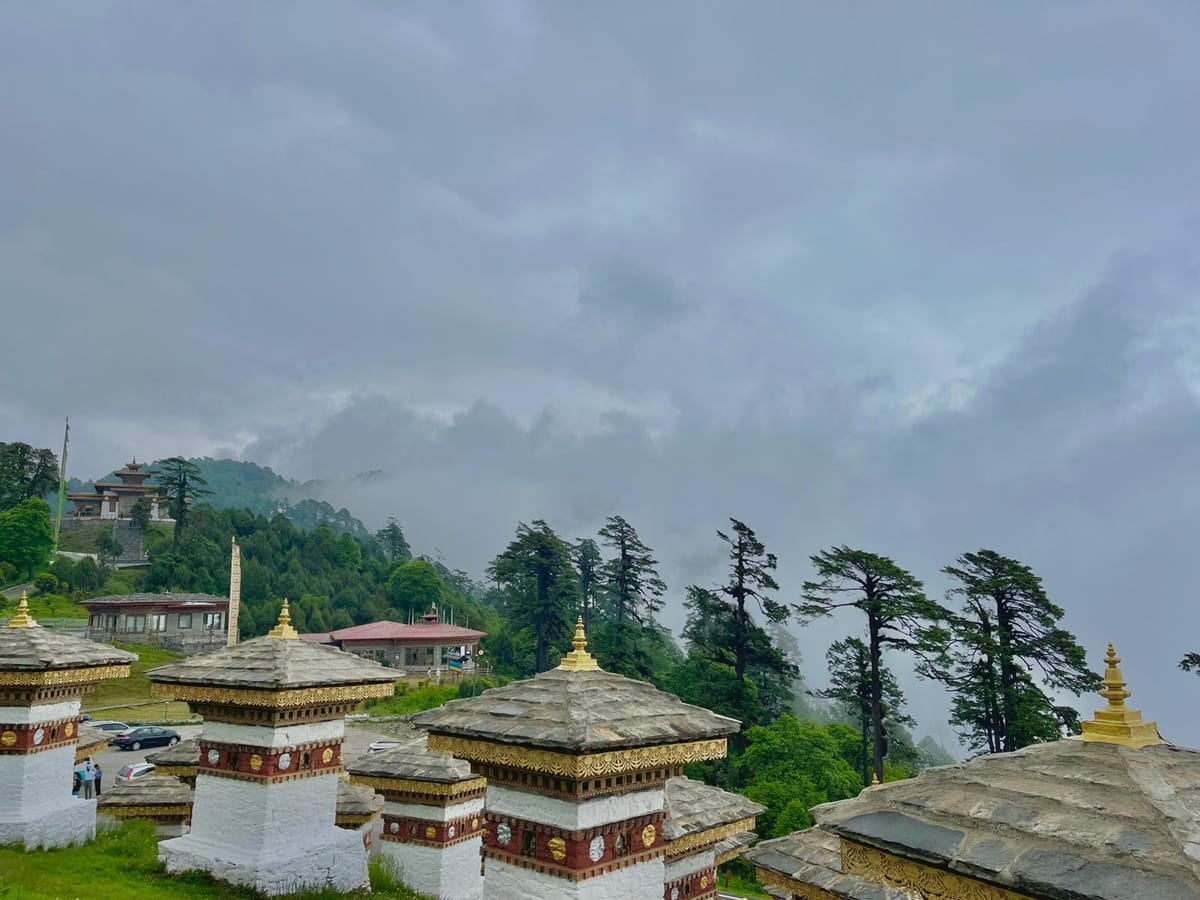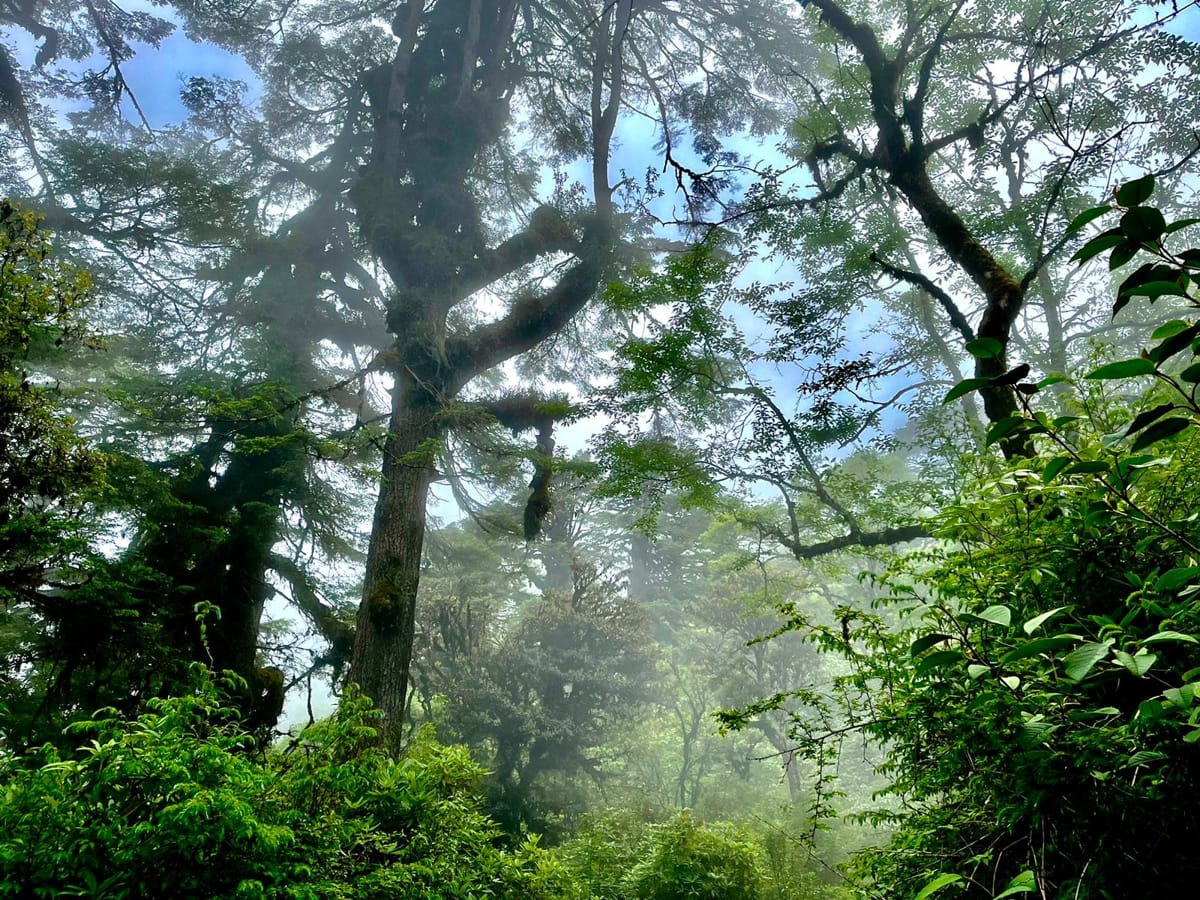“What is pertinent in the calmness of that beauty, its sense of restraint,” says Kazuo Ishiguro in The Remains of the Day. “It is as though the land knows of its own beauty, its own sense of greatness, and feels no need to shout it.” I could not help thinking likewise while walking in south-western Bhutan, my home for the last few days.
The serene kingdom is nestled in the lap of the Himalayas, perched perilously between its colossal continental neighbours – India to its south and Tibet to its north. For starters, south Bhutan is blessed with thickset jungles, verdant countryside and countless hills akin to dollops of soft grain. Forests cover around 72 per cent of its total land, making Bhutan the first carbon-negative country in the world.
Thimphu desires to prevent hordes of tourists giving it a run for its resources.
The hills of southwest Bhutan are not awe-inspiring manifestations of physical attraction, like the mountainous Alps or western Himalayas. They are sincere, rugged and round – a direct contrast to the conical snow-clad peaks that dot the ranges in the kingdom’s north. The sincere hills embody stoicism, a sense of equanimity that gushes in the air. Like their surroundings, the Bhutanese embody composure. They live in close-knit communities lubricated by medieval religious practices, a sense of freewheeling humour and traditional customs. Mahayana and Vajrayana sects of Buddhism form an integral part of Bhutanese national identity.
Buddhist traditions in this part of Asia are magnificently ostentatious. Rich oral traditions of fabulous stories roll from the tongues of the loquacious guides. These stories help humble visitors make sense of the storied land. Legends swirl in mythical soups of Buddha’s various reincarnations and local demon deities. The Bhutanese think of their country as Druk Yul, literally meaning “the Land of the Thunder Dragon.”

Like other Indian tourists, who are the mainstays of the local economy, I journeyed across Bhutan beginning from Phuentsholing, near India’s West Bengal, to the fabled dzongs of Paro and Punakha. Dzongs are ancient Bhutanese castle-fortresses constructed in the 17th century. They are built on strategically located ridges to defend against Tibetan invasions from the north. Apart from administrative spaces, dzongs house monastic bodies – the beating heart of provincial life and culinary traditions. The Punakha dzong or the “Palace of Bliss or Great Happiness” succinctly presents Bhutan’s Buddhist architecture primarily built with wattle, stone, timber, bamboo and rammed earth. Talk about sustainable living? Bhutan marks perfection.
Walls of monasteries, dzongs and hotels are laced with elaborate woodwork and intricate religious designs. Themes in wall paintings range from Buddha’s spiritual journey of renunciation and enlightenment along with majestic portrayals of Guru Padma Sambhava, the Tibetan leader who introduced Buddhism in Bhutan.
Like its South Asian maritime counterpart Maldives, Thimphu deftly regulates the number of tourists that enter its borders. Even a brief visit to the rambunctious Indian hill stations bordering Bhutan makes one understand Bhutan’s motivations. Thimphu desires to prevent hordes of tourists giving it a run for its resources. Look at India’s Darjeeling, the erstwhile summer retreat of the British – now swamped with unruly crowds, plagued by water woes and a fragile ecosystem. Its ability to draw and regulate the visitors in its borders makes Bhutan’s tourism export model a mighty success.

From a geopolitical lens, observers note that the kingdom’s conundrum lies in realising a “delicate balance” which involves resolving a border dispute with China without ceding too much of its territory. To do so would alienate Delhi or further incentivise land grabbing by Beijing.
Historically, Bhutan and India have a robust friendship dating back to 1949.Shorn of the trite niceties, Delhi enjoys a guiding hand in shaping Bhutan’s foreign and defence policies. India has also actively worked to integrate Bhutan’s prosperity into India’s own economic needs. The export of hydroelectricity and tourism to India primarily sustains the Bhutanese economy.
Until the 1960s, Bhutan closed itself from the outside world. Deliberate policy and cold geographic reality ensured that products of “modernity” such as concrete roads, electricity, motor vehicles and telephones did not penetrate this sacred geography. Gradually, Bhutan started changing under King Jigme Singye Wangchuck of the Wangchuck dynasty. The royalty is deeply revered in Bhutan. It is seen as the harbinger of high education levels, sound healthcare systems and domestic prosperity. Even the concept of “Gross National Happiness” in contrast to the quantitative and aloof Gross Domestic Product is the brainchild of Bhutanese royalty.
Bhutanese earnestly believe that collective well-being assumes the greatest priority for their citizens.
In a surprise to many foreign observers, King Jigme Singye Wangchuck voluntarily abdicated his throne to pave the way for democracy in 2006. Bhutanese officials maintain that their country is the rare example of a state where democracy did not come due to the vociferous demands of the populace. It was rather granted by their beloved royalty which believed that the time for its people to take the state’s reins in its own hands had come.
Apart from the royalty, another aspect of Bhutanese life that struck the Indian in me was the deliberate celebration of sexual imagery in public places. For the uninitiated, contemporary India is a land where anything to do with physical desire is largely taboo. To be sure, such a taboo is slowly disintegrating. Many Bhutanese believe that carnal cravings can act as pathways to spirituality. The venerated lama Drukpa Kunley or the “Divine Madman” romped around Bhutan in the 16th century, showcasing the powers of his “flaming thunderbolt”. Paintings and memorabilia of phalluses are seen in diverse places from temples to souvenir shops.
Having said all this, the one idea that will remain etched with me is the Bhutanese conception of happiness. Bhutanese earnestly believe that collective well-being assumes the greatest priority for their citizens. Their cultural richness draws from a reservoir of profundity. It repudiates the logic that throwing money away at life’s problems and material desires will pacify existential questions of who we are and what makes us happy. In other words, no matter if one flaunts Balmain or Givenchy, the void within will not fill.


